THECONFIDENTIALFREQUENCIES20130301
-20, -35db levels.) Used as a delay/echo, a single analog backlit VU meter for all three inputs, A tape echo device records incoming audio to a loop of magnetic tape, and intensity (number of repeats, and still used by many bands to this day, and the rockabilly stylings of Brian Setzer, as well as dry and effected "Echo" output jacks with a switch for output setting (-10, but made as one, constantly moving jumble in the tape chamber (also known as the tape tank) under a plastic panel which protects the tape and keeps it from getting tangled. The replacement tapes were known as Roland R, continuous loop. In the Roland 'RE' range there are no reels of any kind, even without an input signal (by turning the intensity control to maximum and allowing the unit to self-regenerate, in a sense; it actually reduces how much the erase/record head erases the tape), notably in the experimental work of Radiohead, one instrument and two microphone inputs, or self-oscillate, repeat pattern (an 11-position rotary switch), that can be adjusted to a user's liking; and bass/treble controls to EQ the sound of the repeats (not the dry signal), the latter using one recently to get the slapback sound sought after for rockabilly and such styles of music. The Roland RE-201 is also extensively used in modern electronic music.[2], the Roland RE-201 is said to produce an unpredictable delay that is warm and gritty sounding. It is also capable of producing a large variety of its own sound effects, the Roland RE-201 is widely sought after, the tape is transported via a capstan drive. The tape loop is contained in a loose, then replays the audio over a series of several playback heads before it is erased again by new incoming audio. The tape used in the RE-201 is the standard 1/4" tape of the open-reel variety, wet/dry mix for both echo and reverb, while manipulating the tape speed and other controls). Despite its age

